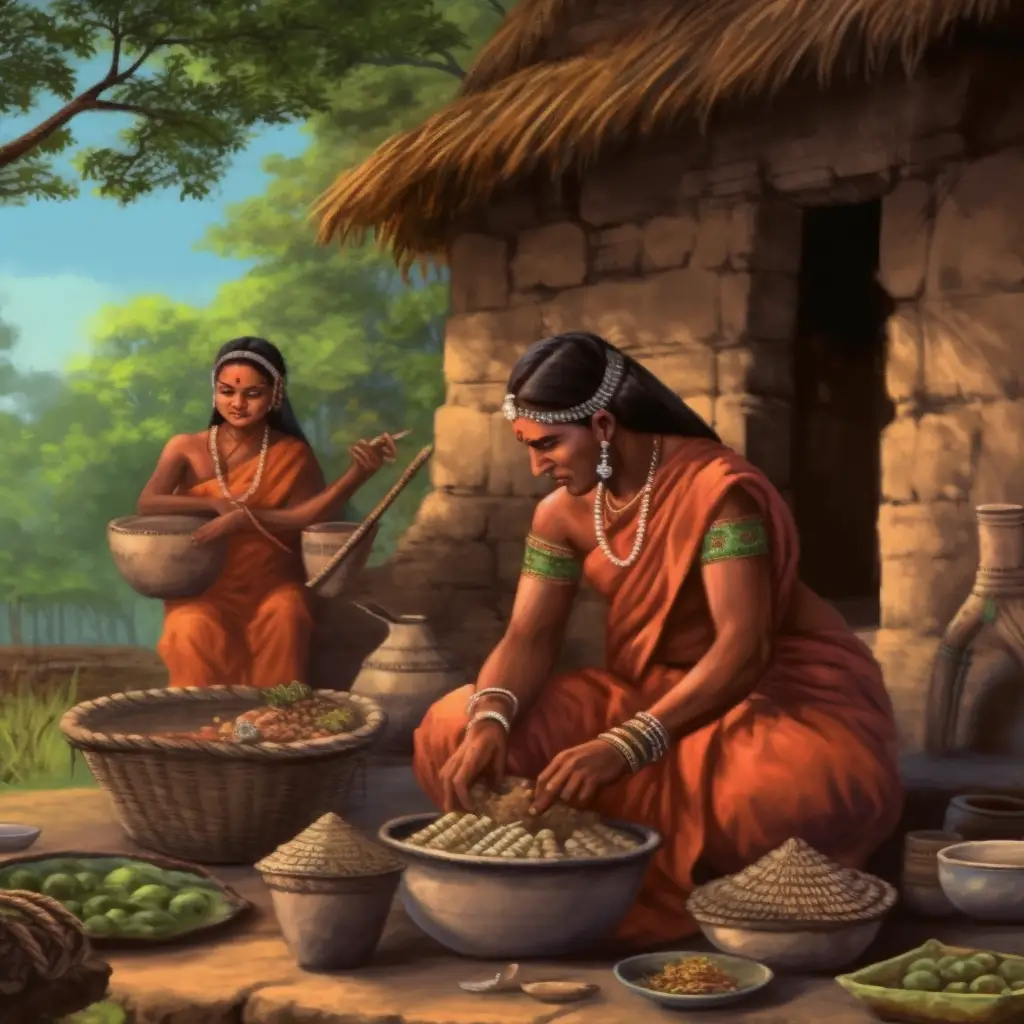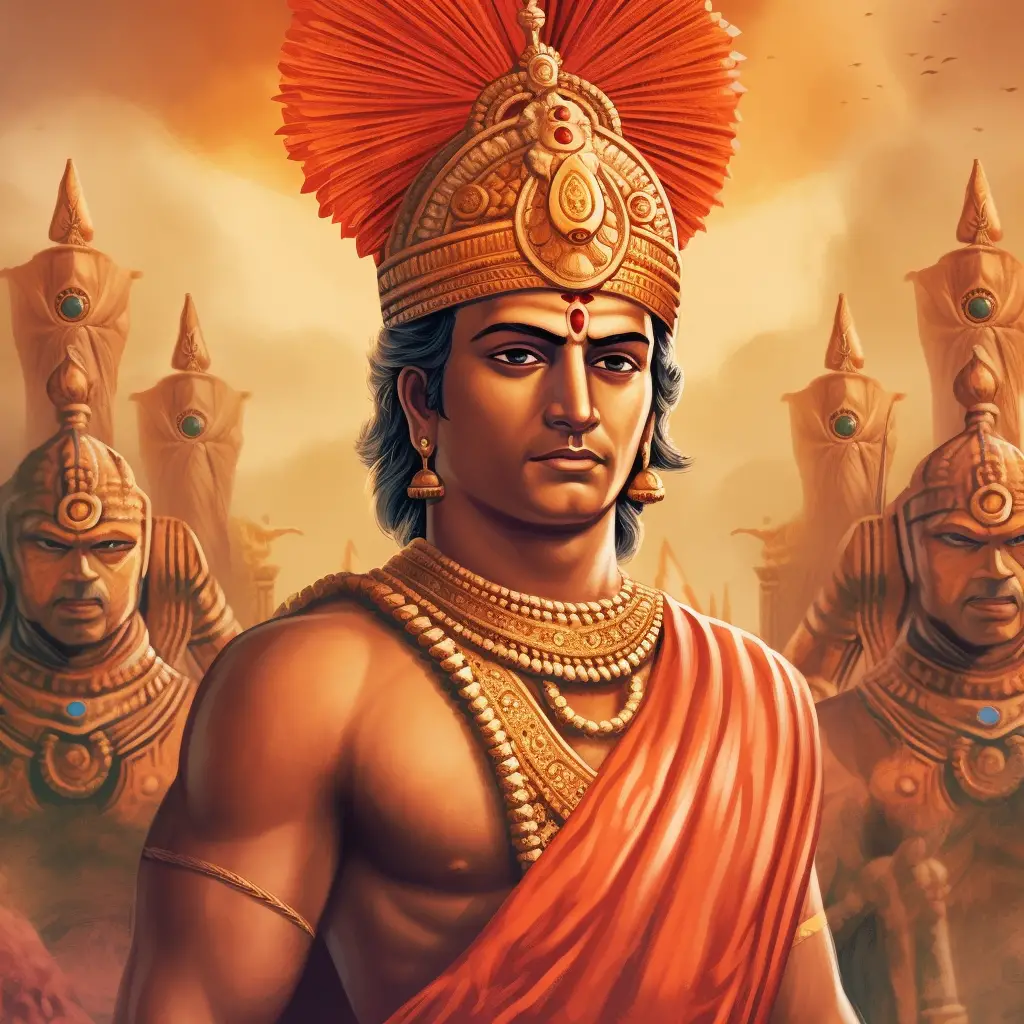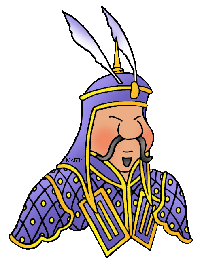Ancient Indian Daily Life
Ancient India was a civilization that flourished from around 2600 BCE to 500 BCE. It was characterized by a complex social structure, with a caste system that divided people into different classes based on their occupation and birth.
The Indus Valley Civilization, which was one of the earliest civilizations in the world, was located in ancient India. The civilization was known for its advanced urban planning, sophisticated drainage systems, and impressive public works.
Ancient India also gave birth to important religions such as Hinduism, Buddhism, and Jainism, which continue to have a significant impact on the world today.

Ancient India Facts for Kids
- Indus Valley: One of the world’s first cities, Mohenjo-Daro, was in India.
- Writing: Ancient Indians developed the Sanskrit language.
- Mathematics: They invented the concept of zero and decimal systems.
- Yoga: Yoga originated in ancient India, over 5,000 years ago.
- Chess: The game of chess was first created in India.
- Medicine: Ancient India practiced Ayurveda, an early form of medicine.
- Clothing: Cotton was first spun and woven in India.
- Religion: Hinduism, Buddhism, and Jainism started in India.
- Empires: The Maurya and Gupta Empires were major powers.
- Art: Indian artisans were known for pottery, painting, and sculpture.
Ancient Indian Civilizations
Ancient Indian civilizations like the Indus Valley and the Vedic civilization shaped early Indian culture and society. The Indus Valley civilization is known for its advanced urban planning and remarkable architectural accomplishments.
Later, the Vedic civilization laid the groundwork for cultural and religious norms, including the creation of the oldest Hindu scriptures, the Vedas. Empires like the Maurya and Gupta also emerged, marking periods of significant progress in multiple fields. These civilizations have left a lasting legacy that continues to influence present-day India.
Hinduism
Hinduism originated in ancient India, with the Vedic period being critical to its formation. This era gave birth to the four Vedas, the earliest scriptures that house the spiritual concepts of Hinduism. Key philosophical epics like the Mahabharata and Ramayana were also created during this time.
These texts and the six schools of Hindu philosophy shaped the comprehensive worldview of Hinduism. Ancient Indian temples reflect this period’s architectural excellence and religious devotion. So, ancient India was pivotal in Hinduism’s development and growth.
Buddhism and Jainism
Buddhism and Jainism, both significant religions, originated in ancient India. Buddhism, founded by the Buddha, focuses on the path to enlightenment through the Four Noble Truths and the Eightfold Path. On the other hand, Jainism, established around the same time, emphasizes non-violence, truth, and asceticism, and believes in karma and reincarnation. Both religions have contributed to India’s spiritual and cultural landscapes, promoting pathways to liberation through peace and personal spiritual growth.
Indian Philosophies
Ancient India was a hub of philosophical thought. This period saw the development of the six schools of Hindu philosophy, each exploring deep metaphysical questions about reality and self. Around the same time, Jainism and Buddhism emerged, adding their unique perspectives to philosophical discourse.
Jain philosophy introduced non-absolutism, while Buddhism focused on the Four Noble Truths and the Eightfold Path. These diverse philosophies continue to influence philosophical discussions in India and globally.
Ancient Indian Science and Mathematics
Ancient India greatly influenced science and mathematics. Indian mathematicians introduced key concepts like zero and the decimal system. In astronomy, they made accurate celestial calculations. They developed Ayurveda, a holistic healing system, and showcased their expertise in architecture and urban planning in the Indus Valley Civilization. These achievements form a vital part of the world’s scientific history.
Maurya and Gupta Empires
The Maurya and Gupta Empires were influential dynasties in ancient India. The Maurya Empire, led by Ashoka, expanded greatly and promoted Buddhism and peace. The Gupta Empire, known as India’s “Golden Age”, saw advancements in arts, science, and culture, and the development of the decimal system. Both empires greatly shaped India’s socio-cultural landscape.
Ashoka the Great

Ashoka the Great, a significant figure in ancient India, ruled the Maurya Empire around 268 to 232 BCE. His reign is known for military conquests and cultural advancements. However, his conversion to Buddhism after the battle of Kalinga is his defining legacy.
This led him to promote peace, non-violence, and social welfare through “Dhamma.” He also spread Buddhism beyond India and introduced written communication via pillars and rock edicts. Ashoka’s enlightened rule is still admired today.
Ancient Indian Art and Architecture
Ancient Indian art and architecture represent its rich cultural heritage. The Indus Valley Civilization showcased advanced city planning, while the Mauryan period introduced the renowned Ashoka pillars. The Gupta period saw the rise of temple and rock-cut architecture, as seen in the Ajanta and Ellora caves.
Art often depicted religious and philosophical themes, with sculptures and paintings showcasing divine beings and scenes from religious texts. These artistic and architectural traditions have left a lasting impact on India’s cultural legacy.
Ancient Indian Trade and Commerce
Ancient India had a flourishing economy with active international trade. The Indus Valley Civilization traded with regions like Mesopotamia, and later, the Mauryan and Gupta periods saw expanded commerce due to agricultural advancements and improved transport routes.
Goods such as spices, cotton, and precious stones were traded widely. India’s position on the Silk Road also made it a key hub in global trade. This economic prosperity significantly shaped ancient India’s societal and cultural growth.
Unearthing Ancient Wonders: A Glimpse into an Advanced Civilization
Archaeological excavations in 1922 revealed two ancient cities with well-planned layouts, featuring straight roads and organized blocks. The majority of houses in these cities were constructed using baked brick and had flat roofs. As discussed in the Architecture section, these houses were equipped with courtyards, wells, and even bathrooms. Additionally, towns boasted grain storage facilities and public baths where people could enjoy swimming.
The excavations yielded fascinating discoveries, including various artifacts such as miniature toy carts, birds, and a monkey toy capable of sliding down a string! Ancient Indian artwork provides insights into the cultural practices of the inhabitants, highlighting their fondness for dance and song. Moreover, their artistic skills extended to pottery, metalwork, and the weaving of fabrics. These skilled craftsmen also manufactured wheeled carts, boats, and ships.
India’s Early Cotton Legacy: Fashion and Jewels Unearthed
The early Indians may have been the first in the world to grow cotton, and they used it to make colorful clothing. The women must have loved to dress up, as many pieces of jewelry have been found: items made of gold, precious stones, and shells.
Ancient Aryan Life: Insights from Sacred Texts and Communal Hearth
The Aryan people migrated to India from Central Asia around 1500 BC. Our understanding of their daily life during that time comes from the books they wrote. Life revolved around communal gatherings near a central fireplace, where people would engage in conversations about the day’s events.
Each “tribe” had a chief, and leadership was typically hereditary, passed down from father to son. Men enjoyed activities like gambling, storytelling, and engaging in conflicts. Women primarily took care of the household and children. In terms of education, instead of formal schools, children had a Guru or teacher who provided instruction. The transmission of information primarily relied on oral tradition, necessitating memorization.
The Caste System: Past Hierarchical Organization and Present Impact
When the Hindu religion gained popularity, the caste system emerged. A caste refers to a social class with assigned roles in society. This system aimed to bring organization but was inherently unfair and unjust, especially towards those in lower castes.
The highest rank was held by the Brahmans, who served as priests and leaders. Next were the Kshatriyas, the warrior class. Following them were the Vaishyas, comprising farm and business owners. Below them were the Shudras, who worked as servants and farm laborers.
Lastly, there were the Untouchables, assigned to menial tasks nobody else would undertake. The Untouchables occupied a position only slightly above that of slaves. Although the caste system has been legally abolished in modern India, remnants of its influence persist in society.
Ancient Indian Diet: Crops, Livestock, and Changing Practices
What comprised the ancient Indian diet? Ancient Indians cultivated various crops such as wheat, barley, rice, chickpeas, lentils, dates, and vegetables. They also raised livestock including sheep, pigs, cows, and water buffalo for meat consumption. Fishing provided another source of food, namely fish. Wheat was utilized in the preparation of chapatis, a type of flatbread. Moreover, the presence of sugarcane in the region likely contributed to the enjoyment of sweet desserts.
Around the year 300, with the rise of Hinduism, dietary practices began to shift. Many adherents embraced a reduction in meat consumption due to ethical concerns regarding animal killing. In subsequent centuries, the worship of a cow-sacred goddess led to the complete abstention from beef consumption.
Muslim Invasions and Changes in Diet and Attire in Northern India
When the Muslims invaded northern India, they introduced religious restrictions on consuming pork, leading to a further decline in meat consumption. Consequently, many Indians adopted a vegetarian lifestyle.
As for clothing, cotton was the predominant fabric worn by Indians, although the affluent occasionally donned silk garments imported from China. Women commonly wore a long cloth called a sari, with young women favoring vibrant colors and older women often opting for white. Men, on the other hand, wore a white, skirt-like cloth known as a dhoti, which could be wrapped around the legs to resemble pants. They also adorned a turban, a cloth wrapped around their heads.
Impact of Muslim Invasion: Fashion, Games, and Athletics in India
After the Muslim invasion, the influence of Muslim fashions became evident as some Indians adopted trousers paired with a long tunic. Additionally, the tradition of adorning a red dot on the forehead, known as a bindi, for decorative purposes emerged and continues to be observed by some.
As for games enjoyed by Indian children, ancient dice have been discovered in the region, indicating that Indians may have been early pioneers in dice games. Indian contributions to game history include the likely invention of Chutes and Ladders, with some evidence suggesting the development of Chess (though influenced by Chinese origins). Indians also introduced the game of Parcheesi and engaged in the African game of Mancala.
Furthermore, Indians found delight in athletic pursuits such as wrestling and camel racing, with a curiosity about the speed capabilities of camels.


